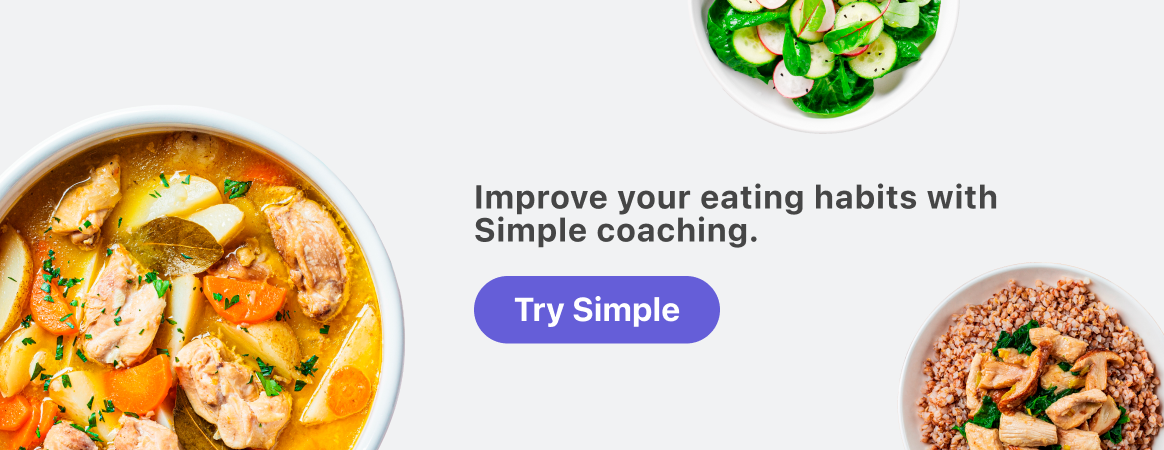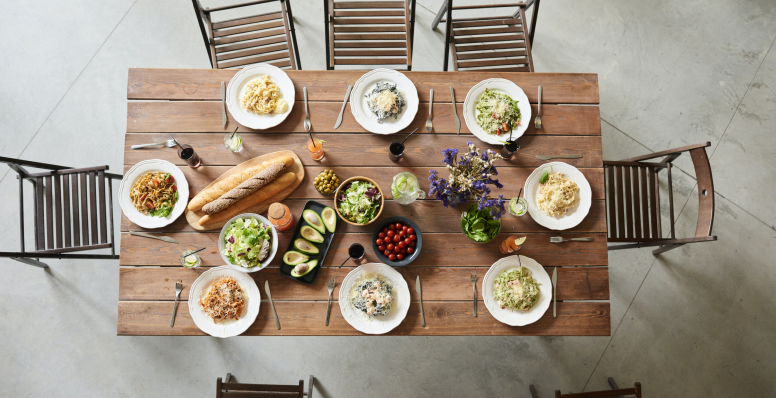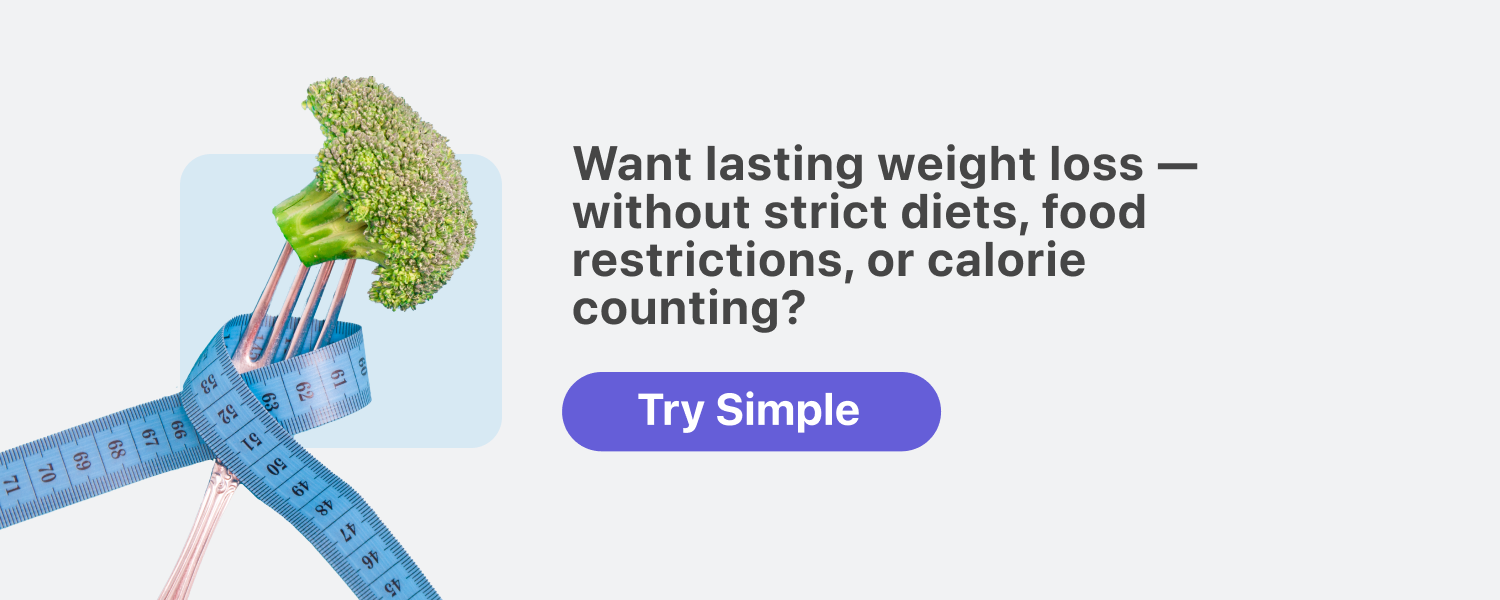How many calories to eat during 16:8 intermittent fasting

Maybe you’ve found your one true pairing in intermittent fasting 16:8 and are ready to tie the knot. Maybe you’re still window-shopping fasting schedules for one that fits your style. Or maybe you overheard someone talking about an eating routine that supposedly can support weight loss, reduce the risk of heart disease, and promote better blood sugar control, and your internet stalking of “Does intermittent fasting work?” dropped you here.[1,2,3]

Whatever your reasons for investigating intermittent fasting 16:8, we know there’s one thing on your mind: the logistics. In a world of strict eating routines and diets layered with rules and regulations, the “what” and “how much” of what you can eat is an important aspect of finding a plan that not only works for you but is also safe, sustainable, and effective.
While the core of intermittent fasting 16:8 is about when you eat rather than what you eat, it’s still crucial to ensure you’re getting all the fuel and nutrition your body needs during your eating time. How many calories to eat during intermittent fasting 16:8 — as well as what foods to prioritize, what to limit or avoid, and if you should calorie count at all — depends on lots of individual factors, like your age, sex, weight, medical history, and physical activity level. At Simple, we prefer to focus less on calories as a number and more on calories as a vehicle for nutrition.
Personalizing your intermittent fasting schedule and caloric intake is key to both safety and success, so we’ve got the lowdown on everything you need to digest about intermittent fasting calories so you can prep your plate perfectly for you.
Before you dive in, if you’re still new to the intermittent fasting scene, check out our guide on intermittent fasting for beginners for an overview of the process and the science behind it.

So, what is 16:8 intermittent fasting anyway?
Before we dive into detail about the specific calories you need for your eating windows, let’s make sure we’re on the same page with what intermittent fasting 16:8 actually is.
Like any intermittent fasting schedule, 16:8 involves dividing your day into time blocks: an eating window and a fasting window. In this case, the “16” represents the number of fasting hours (when you take a complete break from eating and drinking anything with calories), and the “8” represents the number of hours you can be eating.
While 16 hours may sound like a long time — binging an entire season of a Netflix original is probably less of a time commitment — it’s really not as intimidating as it seems. That’s because you’re (hopefully) asleep for half of it.
This schedule effectively extends the natural fast you have overnight. (As much as you may want to believe it based on how quickly that package of cookie dough disappeared, sleep-eating is pretty rare.) So, if you can manage either an early dinner or a late breakfast — or skip one of those meals altogether — you don’t really need to make any other adjustments to fit it into your daily routine.
Fasting for 16 hours also gives you a decent chance of reaching a natural metabolic state where the body uses fat over sugar as its primary fuel (called “ketosis”). That means you might tap into a whole host of body benefits that last beyond the fast itself.
How many calories should I eat while intermittent fasting 16:8?
When it comes to figuring out how many calories + intermittent fasting 16:8 = a happy, healthy you, it’s all about channeling that main character energy. Your unique body, needs, goals, lifestyle, and preferences get center stage here. Let them run the show.
That means the answer to “How many calories should I eat during intermittent fasting?” (or as part of any eating routine) can’t be reduced to a simple equation. You need to factor in things like age, sex, height, weight, underlying medical conditions, and lifestyle factors like how active you are before you can figure out what exactly you need to make the production a success, whatever “success” means to you. This show is all about you and your needs; what works for others may not work for you — and vice versa. Plus, we recommend focusing less on the number itself and more on the nutritional density of the calories you’re consuming.
We know it’s frustrating not having a rough target to aim for when you’re trying to meal plan. We usually recommend a minimum of 1,500 calories as a baseline, and the emphasis is on “minimum” there — most people will likely need more than that. For example, if we look at both biological sex and activity levels, here are some average calorie ranges for people looking to lose 1 to 2 lbs (0.5 to 1 kg) per week:
| Average US male (weighing around 198 Ibs : 90 kg) | Average US female (weighing around 170 Ibs : 77 kg) | |
| Moderately active | 2,000–2,500 calories per day | 1,500–1,900 calories per day |
| Active | 2,750–3,250 calories per day | 1,650–2,150 calories per day |
You can also try our calorie counter for a more tailored estimate. However, the best way to ensure your mind, body, and soul get everything they need for you to be the shining star you are is to work with your primary care provider or registered dietitian — they’ll be able to provide more specific insight into what’s right for you.
We’re also here to help with that. Determining your ideal caloric intake may be complex, but our app makes it simpler by getting to know you, your lifestyle, and your goals before recommending a personalized plan suited to your needs. You can unlock your perfect schedule, get advice from our experts, and get support from our community by taking our Simple quiz.
Before you click on that link, though, an important heads up: we don’t recommend any form of intermittent fasting — especially schedules that also involve calorie counting — to anyone who currently has, or has a history of eating disorders and/or disordered eating behavior. It’s also not a safe setup if you:
- are pregnant, breastfeeding, or trying to conceive;
- have a medical condition (like diabetes);
- are extremely active;
- have a BMI <18.5;
- are under 18 or 80 years or older;
- are prescribed medication (for example, anti-hypertensives, diabetes medications, or any that need to be taken with food).
Even if you don’t identify with any of these categories, we always recommend speaking with a healthcare professional before making any changes to your eating habits.
How many calories break a fast?

Remember that one teacher from high school who was an absolute stickler about grammar? The one who would call you out for a preposition at the end of a sentence (even if that sentence was “Where are you from?”)? And heaven forbid a misplaced comma?
If that teacher were answering the “How many calories can you have while fasting?” question, they would say “Zero.” Nada. Zilch.
That’s because, technically speaking, any calories will break a fast. Consuming anything, food or drink, with caloric content goes against the dictionary definition of “fasting.” By those standards, you’re only really allowed to drink water.
However, there’s a big “but” about to land …
Can I consume any calories when fasting?
Now, that concrete cutoff may be fine for some people, but it may not be completely necessary.
Although scientific evidence hasn’t come to a hard-and-fast conclusion on this topic, it’s anecdotally widely accepted that a few calories during a fasting window — up to nine, from things like coffee / tea with a teaspoon or two of milk — won’t snap you out of your fasted state or make you lose fasting benefits. Depending on why you’re fasting, what breaks a fast might vary, too.
Keep checking in with yourself during your fasting window. If you start experiencing intermittent fasting side effects, keep an eye on them. Some potential side effects may be a sign you need to break your fast and reassess your plan before trying again, so listen to your body and don’t let any side effects go too far.
Remember: fasting may not always be easy, but it should never put your body or well-being at risk. If you need some almond creamer in your coffee one morning or start feeling dizzy and need a snack, don’t beat yourself up. You can always resume your fast tomorrow.
What kind of calories should I consume while intermittent fasting 16:8?

Another cool aspect of intermittent fasting 16:8 flexibility is that it can work in conjunction with other eating plans. Gluten-free, dairy-free, or vegan? No problem. Same for routines like keto, paleo, or Mediterranean. Intermittent fasting is all about when you eat and not what you eat, so what you take in during your eating windows is fully up to you and what you want to achieve with the fasting process.
That said, whatever your health goals and/or weight loss goals are, calories are your fuel: if you want to make sure everything from your head to your toes is functioning at its best, you want to feed it the good stuff. And by “good,” we mean “nutritionally dense” and “health-promoting” because no food — or calorie — is inherently good or bad. It’s just that not every calorie is created equal in the health benefits it may pass on to you.
Generally, prioritizing foods high in nutrient content and low in things like saturated fat and trans fat is the way to go. Pile your plate with fiber, complex carbohydrates, lean proteins, and healthy fats like fruits, vegetables, whole grains, seeds, nuts, and eggs.
Not sure where to start and want to avoid the headache (and time suck) of endless label reading and recipe searching? Take our Simple quiz to get started with your personal fasting schedule, or check out these guides for more inspiration:

What calories should I avoid?
We’ve been there. Sometimes, you need that big bowl of ice cream at the end of the day. Maybe your soul would be incomplete without that Friday night pizza delivery. Or maybe you just can’t imagine a world where you don’t get to chow down on chips while you watch the game.
Calories are about providing nourishment to your mind, body, and soul, whatever that means for your beautiful self. They’re not something to be feared, and life is too short to feel like you’re stepping through booby traps of restrictions at every meal.
So, while we recommend nutritionally-dense foods as being the ideal use of your calorie intake, you don’t necessarily need to avoid less-health-promoting, ultra-processed foods like fries, chocolate, and sweets entirely. Yes, choosing less-nutrient-dense foods is one of the most common intermittent fasting mistakes we see, but so is choosing a plan that overextends you or makes you miserable. After all, they’re not “empty calories” if they’re a needed source of comfort. Plus, moderation is way easier than going cold turkey (though actual cold turkey is a really great source of lean protein … ).
16:8 intermittent fasting and calorie counting — should I combine them?
You can combine intermittent fasting 16:8 with other eating plans and routines … but just because you can doesn’t always mean you should.
Knowing roughly how many calories you need in a day can be a helpful benchmark for ensuring you’re getting all the fuel you need. But keeping track of calories doesn’t exactly guarantee you’re getting all the nutrients you need. Sure, that slice of cake from The Cheesecake Factory may have close to your daily needs calorically speaking, but how many of those calories are the nutritionally-dense kind your body really needs to thrive?
Plus, not everyone finds calorie counting enjoyable. Even for those for whom it’s safe, counting calories can be both stressful and time-consuming, especially if you have other dietary considerations to factor in.
Thankfully, there are plenty of other ways to supercharge your meal planning, and some studies suggest fasting benefits like weight loss, fat loss, or increased insulin sensitivity can still be achieved without limiting caloric intake.[4] One trick that can be particularly helpful — and much quicker and easier time-wise — is to use the plate model: with every plate of food, aim for ½ vegetables (like leafy greens), ¼ lean protein (like tofu, eggs, and chicken), and ¼ complex carbs (like grains and brown bread).
How long does it take for 16:8 intermittent fasting to work?

Much like how many calories you need, how long it takes before you start seeing intermittent fasting results depends on:
- what your goal is, like weight loss, fat burning, reduced blood pressure, or better management of insulin levels;
- individual factors, like age, sex, and medical conditions; and
- personal circumstances, like your stress levels, what you eat, and how active you are.
Different results can also show up at different times and in different ways.
If you’re fasting for weight loss, for example, research suggests it may take between two and ten weeks to lose an average of 7 to 11 pounds (which is great since losing 1 to 2 lbs a week is a safe, sustainable pace).[5] But beyond the scale, you may feel less bloated within a few days, and there’s evidence that even one or two fasts may boost your sugar and fat metabolism.[6] Those results may not stick around if you stop fasting, but it’s still pretty motivating to spot those early wins.
When it comes to measuring your progress, the best method is to know and track what you want to get from the whole shebang. Be on the lookout for short-term and long-term victories — whether they’re attached to the scale or not — and be patient. Safe and long-lasting results take time. Rest assured that if you get stuck, there are loads of ways to optimize the process and switch things up.

How many calories you should eat on 18:6 — as with any intermittent fasting schedule — depends on factors like your age, sex, height, weight, underlying medical conditions, goals for fasting, and physical activity levels. Consult your doctor / registered dietitian or use our calorie counter for more specific guidance.
Lots of factors may influence why you’re not losing weight on a 16:8 fasting schedule. Eating too many calories or ultra-processed foods, not getting enough sleep, and being stressed out are common weight loss saboteurs. If your fast isn’t hitting the mark for your weight loss goals, speak to your healthcare provider and browse our “intermittent fasting not working” guide.
Technically speaking, consuming any calories breaks a fast, but will 20 calories break a fast in the sense of completely eliminating intermittent fasting benefits? Likely not, though it could disrupt ketosis. Up to 9 calories per fast is the safest option, so a cup of tea or coffee with a splash of milk is likely fine, but stick as close to zero calories as possible as much as you can to be sure of keeping your fast intact. If you’re not feeling well, though, it’s of course okay to break your fast!
- Gu L, Fu R, Hong J, Ni H, Yu K, Lou H. Effects of Intermittent Fasting in Human Compared to a Non-intervention Diet and Caloric Restriction: A Meta-Analysis of Randomized Controlled Trials. Front Nutr. 2022 May 2;9:871682.
- Yang F, Liu C, Liu X, Pan X, Li X, Tian L, et al. Effect of Epidemic Intermittent Fasting on Cardiometabolic Risk Factors: A Systematic Review and Meta-Analysis of Randomized Controlled Trials. Front Nutr. 2021 Oct 18;8:669325.
- Yuan X, Wang J, Yang S, Gao M, Cao L, Li X, et al. Effect of Intermittent Fasting Diet on Glucose and Lipid Metabolism and Insulin Resistance in Patients with Impaired Glucose and Lipid Metabolism: A Systematic Review and Meta-Analysis. Int J Endocrinol. 2022 Mar 24;2022:6999907.
- Song DK, Kim YW. Beneficial effects of intermittent fasting: a narrative review. J Yeungnam Med Sci. 2023 Jan;40(1):4–11.
- Seimon RV, Roekenes JA, Zibellini J, Zhu B, Gibson AA, Hills AP, et al. Do intermittent diets provide physiological benefits over continuous diets for weight loss? A systematic review of clinical trials. Mol Cell Endocrinol. 2015 Dec 15;418 Pt 2:153–72.
- Stratton MT, Albracht-Schulte K, Harty PS, Siedler MR, Rodriguez C, Tinsley GM. Physiological responses to acute fasting: implications for intermittent fasting programs. Nutr Rev. 2022 Feb 10;80(3):439–52.
